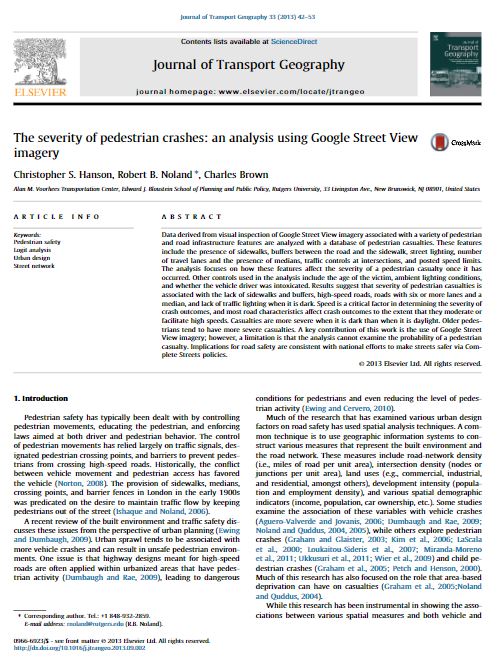Abstract
Data derived from visual inspection of Google Street View imagery associated with a variety of pedestrian and road infrastructure features are analyzed with a database of pedestrian casualties. These features include the presence of sidewalks, buffers between the road and the sidewalk, street lighting, number of travel lanes and the presence of medians, traffic controls at intersections, and posted speed limits. The analysis focuses on how these features affect the severity of a pedestrian casualty once it has occurred. Other controls used in the analysis include the age of the victim, ambient lighting conditions, and whether the vehicle driver was intoxicated. Results suggest that severity of pedestrian casualties is associated with the lack of sidewalks and buffers, high-speed roads, roads with six or more lanes and a median, and lack of traffic lighting when it is dark. Speed is a critical factor in determining the severity of crash outcomes, and most road characteristics affect crash outcomes to the extent that they moderate or facilitate high speeds. Casualties are more severe when it is dark than when it is daylight. Older pedestrians tend to have more severe casualties. A key contribution of this work is the use of Google Street View imagery; however, a limitation is that the analysis cannot examine the probability of a pedestrian casualty. Implications for road safety are consistent with national efforts to make streets safer via Complete Streets policies.
